Some notable K-12 Schools in Bhubaneswar – from a Dharitri supplement
1 comment January 31st, 2012 Author : Chitta Baral
1 comment January 31st, 2012 Author : Chitta Baral
Following is an excerpt from a report in Business Standard.
The fist academic session of the city centre of All India Institute of Medical Sciences (AIIMS) medical college is set to begin from August this year. The 500-bed multi-speciality hospital is expected to start functioning from December 2012.
“The session for the first batch of students for AIIMS medical college will begin from August 2012 with an intake of 50 seats. We expect the hospital to be operational from December this year. Work on the AIIMS campus is 65 per cent complete,” said P K Pradhan, Union health secretary. On the state government’s demand for funds for seat hike in three government run medical colleges, Pradhan said, “The Chief Secretary has said that the state government intends to raise intake of each of three medical colleges from 150 to 250. This requires an investment of Rs 100-150 crore per college for infrastructure upgrade. We are coming up with a scheme wherein we can provide funds to the state government for upgradation of infrastructure at medical colleges.”
Various Odia papers report that as of today 65% of the Hospital building construction and 70% of the college building construction are completed.
8 comments January 31st, 2012 Author : Chitta Baral
Following is an excerpt from a report in the Times of India.
… the 12th Plan period document of UGC has proposed 20 exclusive universities for them and 800 constituent colleges under the Central varsities to ensure equity in access to quality education.
The University Grants Commission (UGC) has also sought a four-time hike in allocation during the Five Year Plan period from Rs 46,632 crore to Rs 1,84,740 crore to achieve its proposed initiatives.
The initiatives also include upgrading of autonomous colleges with potential of excellence, enhancing intake capacity of institutes of higher education and development of ‘college cluster universities’.
… Giving thrust on women’s education, the plan document has proposed 20 universities facilitating their entry into higher education even from very traditional background and rural and sub-urban areas.
The Central government is proposed to fund their establishment while the State governments may provide the land and help to establish such universities, the document states while holding that the idea was included "because the social dynamics of our system".
In the past there have been proposal for a womens IIT in the current President’s home town. I think the approach of having 20, distributed across the larger states of the country, is more equitable than having a few in the constituencies of powerful people. Inside each state these universities should perhaps be in strategic places, perhaps in their second largest metro areas, thus giving a push to develop additional metro areas.
January 26th, 2012 Author : Chitta Baral
The posting at http://prayatna.typepad.com/education/2012/01/pisa-sample-questions.html links to PISA sample questions. They are at http://www.oecd.org/dataoecd/47/23/41943106.pdf . In the web I also came across some CBSE sample questions; for example at http://www.cbseguess.com/papers/sample_papers/x/2012/english.php.
While it is good that the CBSE questions in English now-a-days has a significant focus on Reading Comprehension, based on the sample questions it seems that the comprehension is tested with respect to text or poetry. Following is a sample.
On the other hand when one goes over the PISA sample questions the Reading part is not just text, but is "reading material" that one may come across in day to day lives. It contains text that may be mixed with other forms of reading material. Following are some samples from the PISA sample questions.
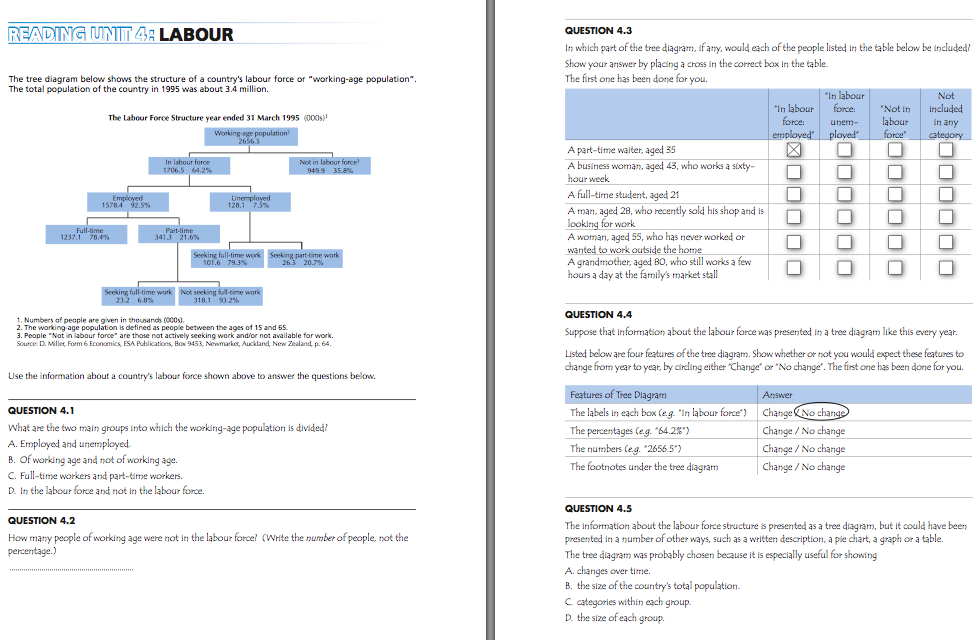
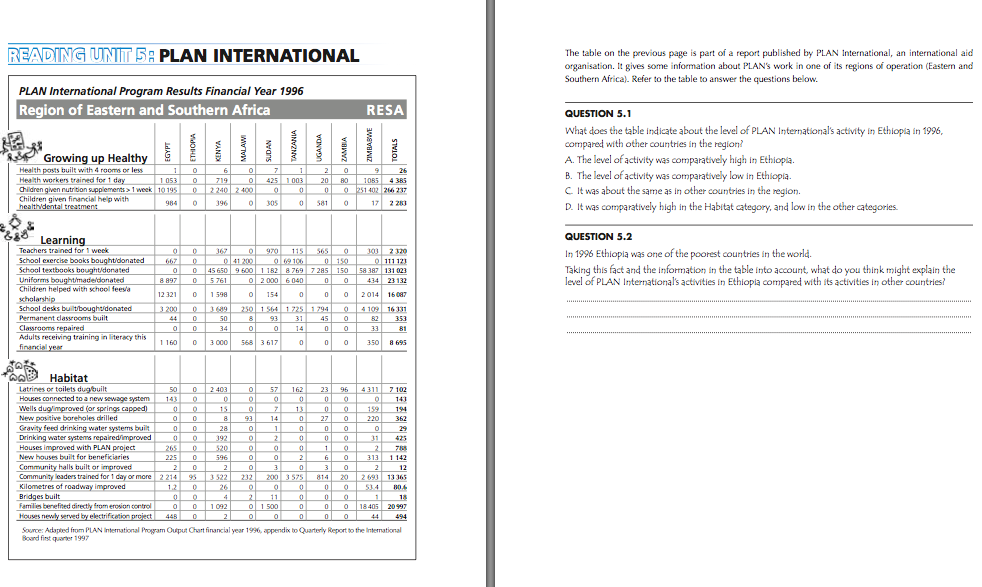
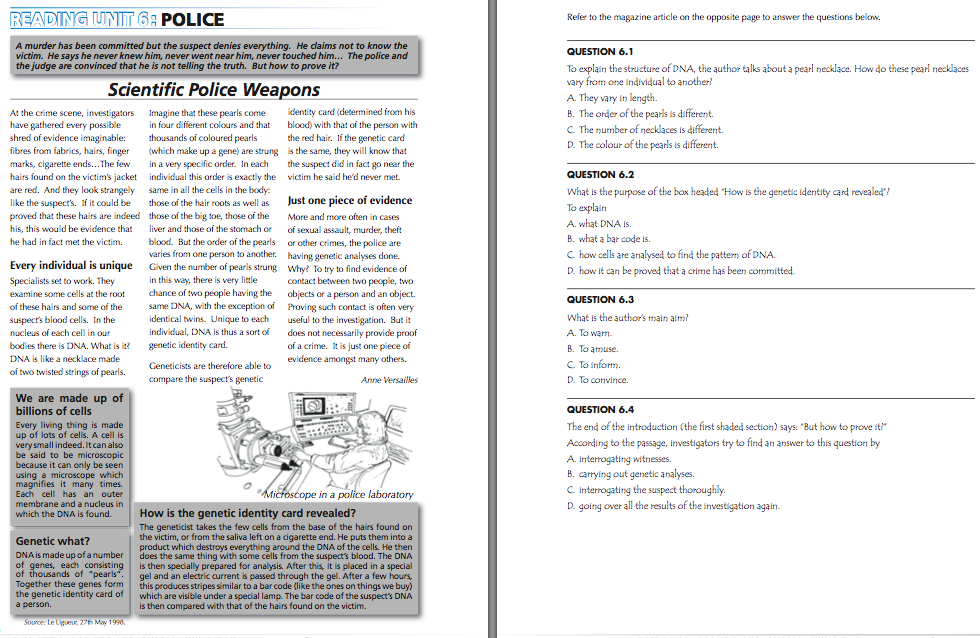
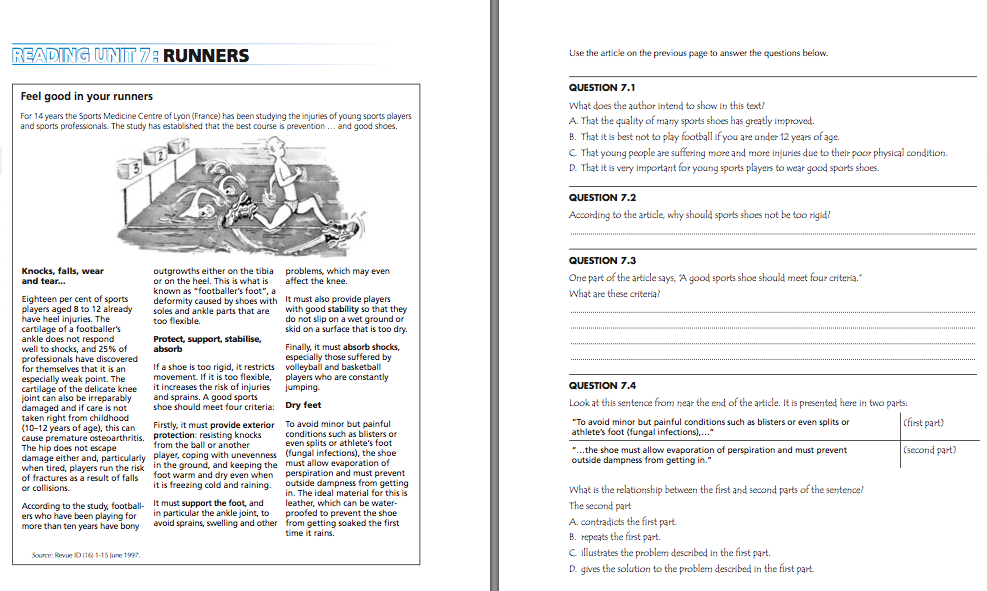
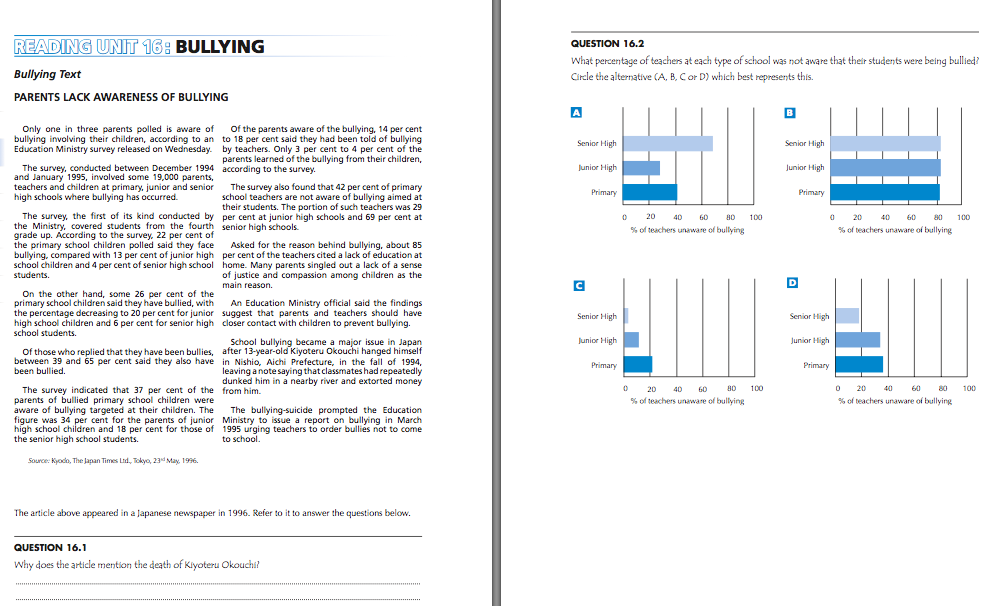
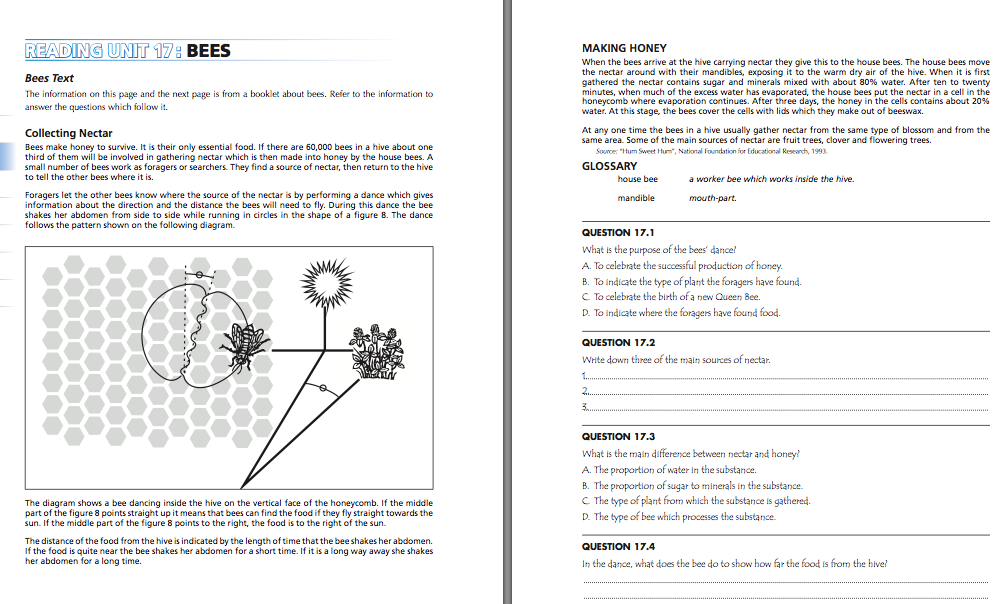
January 24th, 2012 Author : Chitta Baral
The column is at http://www.telegraphindia.com/1120123/jsp/odisha/story_15040583.jsp. Thank you Telegraph publishing this and Priya and Bibhuti for making it happen and encouraging me.
Some indentations are missing in the column. So my original submission is given below. I appeal to the readers to write to the CM and Chief Secretary at cmo@ori.nic.in and csori@ori.nic.in respectively and urge them to at least take teh actions mentioned in the article below. In this regard, note that the way Nalanda International University happened is that the Bihar CM Nitish Kumar pushed it with the PM as well as stalwarts like Amartya Sen. The Odisha government (namely the CM and CS) need to take similar steps.
While most people in Odisha have read in their history text books about Nalanda as an ancient center of higher learning and know about Bodhgaya as a Buddhist site where Buddha is said to have attained enlightenment , very few of us know about the Buddhist sites of Ratnagiri, Lalitgiri and Udayagiri in the Jajpur district of Odisha and even fewer have visited them; many confuse the Buddhist site of Udayagiri in Jajpur district with the Khandagiri-Udayagiri in Bhubaneswar.
This is somewhat unfortunate as top researchers in Archaeology and art history have compared Ratnagiri with Nalanda and Bodhgaya and such comparisons have been reported in books and articles written in India and abroad.
The three sites of Ratnagiri, Udayagiri and Lalitgiri are identified as the sites of the ancient Ratnagiri Mahavihara, Madhavpur Mahavihara and Chandraditya Vihara and the proceedings of the 1998 Indian Art History Congress makes a mention of this.
Debala Mitra, the Director General of Archaeological Survey of India during 1975-1983, who explored and excavated several Buddhist sites in India, and wrote many books on various archaeological sites in India, wrote a two volume book on Ratnagiri and another book titled“Buddhist monuments of India” . In the latter book she compares Ratnagiri with Nalanda and says the following.
… Recent excavations of the top of the hillock brought to light imposing remains of one of the most important Buddhist establishments, reclaimed as Ratnagiri-mahavihara (and not Pushpagiri-viahara as presumed by some) on the basis of a number of sealings bearing the legend S’ri-Ratnagiri-mahavihariy-aryabikshu-sanghasya. With its nucleus dating atleast from about the fifth century A.D., the establishment witnessed a phenomenal growth in religion, art and architecture till the twelfth century A.D. It played a significant role in disseminating Buddhist culture and religion forming itself, like Nalanda, an important religious and philosophical academy, to which flocked the entrants and scholars to take lessons from the intellectual stalwarts of Buddhism.
She backs up her claims with multitude of evidence including references to Tibetan literature such as:
Taranatha in his History of Buddhism in India (completed in A.D. 1608) says that a vihara, called Ratnagiri, was built on the crest of a mountain in the kingdom of Odivisa (Orissa) in the reign of Buddhapaksha (identified with the Gupta Emperor Narasinghagupta Baladitya of the Gupta dynasty by N. Dutt), an in this vihara were kept three sets of Mahayana and Hinayana sastras, etc., and there were eight great groups of dharma (religious schools?) and five hundred monks. According to the Pag Sam Jon Zang (completed in A.D. 1747), Acharya Bitoba went through magic to Sambhala where he obtained the Kalachakra-tantra, brought it to Ratnagiri and explained the doctrine to Abodhutipa, Bodhisri, and Naropa. This and other Tibetan references indicate that Ratnagiri was a renowned center, noted for the spiritual inspiration and lively pursuit of the Kalachakra-tantra in the latter part of the tenth century A.D.
Addressing some concerns by researchers she says:
The veracity of these late Tibetan works, which is often questioned, is amply borne out by the excavated remains which are spectacular even in their ruins. The excavation laid bare the remains of an imposing stupa (Main Stupa), rebuilt at least once, two magnificent qudrangular monasteries (Monasteries 1 and 2), also rebuilt at least once, a single-winger monastery, eight temples, a large number of stupas, sculptures and architectural pieces, objects of daily use and hundreds of other evidences of what life was like in these sumptuous monasteries. Indeed, excavations have revealed that here was an establishment that can be compared with that of Nalanda. In the overwhelming number of portable monolithic stupas Ratnagiri can compete even with Bodh-Gaya. … The number of these antiquities is an adequate index of the profound popularity and sanctity of this center in the Buddhist world.
All of the above are elaborated in her book on Ratnagiri where she says the following regarding Monastery 1 being the finest such structure unearthed in India.
Notwithstanding its normal monastic plan, it is a singular structural monument not only for its impressive size and symmetrical planning but for the rich but balanced surface-treatment of the front porch and the façade of the shrine. Not a single monastery of Nalanda, which has yielded so far the largest number of spectacular structural monasteries , can compete with this one in respect of embellishment. … Indeed, the monastery is the finest structural one so far unearthed in India.
Although Debala Mitra’s books have the most detailed references and arguments regarding the important of Ratnagiri vis-à-vis Nalanda and Bodhgaya, a search (of Ratnagiri and Nalanda) in http://books.google.com shows that her views are agreed upon and propagated in books and articles published around the globe.
I corresponded and personally met Prof. Thomas Donaldson of Cleveland who has written many books on art history of Odisha and India. In one of his emails to me he wrote:
As you know Ratnagiri was a rival to Nalanda as a site of Buddhist learning and some later Tibetan texts even ascribe the origin of Mahayana and Tantrayana to Ratnagiri. Collectively the three closely situated sites certainly compare artistically to the site of Nalanda.
From the above it is quite evident that Ratnagiri in Odisha, by itself is a site that is comparable to Nalanda and Bodh Gaya in many aspects and together with the nearby Lalitgiri and Udayagiri they form a triangle of an unparalleled Buddhist complex in India. Unfortunately, this is not much known to people in Odisha, let alone outside Odisha. Although the Odisha government has been trying to create a tourist circuit around these sites, it is yet to bear fruit.
In that regard we suggest the following:
(i) The Odisha government create a major tourist campaign using some of the above mentioned quotes in huge hoardings in places such as Bhuaneswar airport, station, and major tourist sites and offices in Odisha and India.
(ii) The Odisha government pursue the imemdiate establishment of a centrally funded Indian Institute of Arcaheology and Art History located near these sites to produce adequate number of trained manpower to expedite the excavations in Udayagiri and recently discovered nearby sites such as the Langudi hills site.
In addition it should help in the recent effort to establish a Ratnagiri-Puspagiri International University as a revival of the Ratnagiri and Puspagiri Mahaviharas along the lines of the recently revived Nalanda International University; Puspagiri being the Mahavihara mentioned in Hiuen Tsang’s Si-yu-ki and thought by many to represent a subset of Ratnagiri, Lalitgiri and Udayagiri; but is yet to substantiated by archaeological evidence.
Last December, I had a chance to discuss the above compilations of quotes with Utkal University professors of the Department of Ancient Indian History, Art History & Archaeology and also with the Culture and Tourism Secretary. Although I was not able to discuss this with the CM or CS, I hope the above points will be forwarded to them and they will quickly take some necessary actions. Additional details on this is available at http://www.facebook.com/puspagiri .
2 comments January 23rd, 2012 Author : Chitta Baral
I have been thinking of this issue since December when I interacted with a niece and nephew of mine (see below). Today I came across a TOI report on Indian students being at the bottom (2nd from bottom), which made me reflect further and write this post. Following are some excerpts from that report.
Fifteen-year-old Indians who were put, for the first time, on a global stage stood second to last, only beating Kyrgyzstan when tested on their reading, math and science abilities.
India ranked second last among the 73 countries that participated in the Programme for International Student Assessment (PISA), conducted annually to evaluate education systems worldwide by the OECD (Organisation for Economic Co-operation and Development) Secretariat. The survey is based on two-hour tests that half a million students are put through.
… The states of Tamil Nadu and Himachal Pradesh, showpieces for education and development, were selected by the central government to participate in PISA, but their test results were damning.
15-yr-old Indians 200 points behind global topper
Tamil Nadu and Himachal, showpieces of India’s education and development, fared miserably at the Programme for International Student Asssment, conducted by the Organisation for Economic Co-operation and Development Secretariat.
An analysis of the performance of the two states showed:
In math, considered India’s strong point, they finished second and third to last, beating only Kyrgyzstan
When the Indian students were asked to read English text, again Tamil Nadu and Himachal Pradesh were better than only Kyrgyzstan. Girls were better than boys
The science results were the worst. Himachal Pradesh stood last, this time behind Kyrgyzstan. Tamil Nadu was slightly better and finished third from the bottom
The average 15-year-old Indian is over 200 points behind the global topper. Comparing scores, experts estimate that an Indian eighth grader is at the level of a South Korean third grader in math abilities or a second-year student from Shanghai when it comes to reading skills.
The report said: "In Himachal, 11% of students are estimated to have a proficiency in reading literacy that is at or above the baseline level needed to participate effectively and productively in life. It follows that 89% of students in Himachal are estimated to be below that baseline level."
The detailed and insightful blog posts here, here, here, here and here have more details on this PISA test and MHRD’s reaction to India’s performance.
So here are my personal thoughts on this.
As I mentioned earlier, this December I interacted with a nephew and a niece in India. This niece lives in a small town (Vyasanagar) and had 85%+ in her class ten exam and was preparing for her +2 Science exams. She was very good at solving math problems on topics that she had already learned. For some reason I asked her to read a new section in the book and solve the problems at the end of the section. She could not do it. She asked me to explain that section. Upon further inquiry I found that her studying pattern was to attend "tuition" where the tuition master would explain a particular section of a book and then give problems. In other words she was lacking in "reading comprehension". The same story with respect to my nephew, an engineering student. He could not read a section on his own and understand it well enough to solve the problems at the end of the chapter.
Considering the prevalance of "tuition" in India the above are not isolated cases. I think the "epidemic" of tuition is due to the fact that most school students in India have not developed the "reading comprehension" skills. That is because developing the "reading comprehension" is neither emphasized nor tested and this is especially true with respect to "Reading comprehension in English".
Starting from the very beginning, English text books have a series of chapters with stories, essays or poems and at the end of it there are questions with respect to them. This seemingly suggests that students using those text books are being taught "Reading comprehension in English".
That is not the case.
Most often, the teachers or the tutors read the text and explain the students those chapters. At times they may ask the students to read the text aloud. But that does not automatically develop the "reading comprehension" skills.
I am surprised that the neglect of the development of "reading comprehension" skills has not been widely noticed and acted upon. Following are pointers to some places where they have been noticed. But I am not sure they have been properly addressed.
The wonderful organization Pratham has a "Read India" program. Following is an excerpt from their main page:
Read India was therefore launched on a national scale in 2007 to help achieve the following objectives:
* All Std I children know at least alphabets & numbers.
* All Std II children can read at least words & do simple sums.
* All Std III-V children can at least read simple texts fluently & confidently solve arithmetic problems.
Later in that page they have:
In 2009-10 Read India moved to the next level, Read India II, focuses on higher grade-specific learning competencies, where basics have been achieved.2010 onwards, Read India II moved from our previously used model of short-term large-scale learning campaign mode to a longer, more sustained presence in the villages that we work in, in order to bring about a deeper more permanent impact.
However, no where in that page "Reading Comprehension" is mentioned. But by googling the phrase "Reading to Learn R2L methodologies Pratham" I was able to reach the page http://www.prathamusa.org/programs/learning-support-classes where "reading comprehension" is mentioned in the following context.
Read to learn (R2L) picks up where Learn to Read leaves off. Out-of-school children are the priority of the program. Once children have built their basic reading skills, they are taught how to read with comprehension and express what they have learned. R2L classes have two phases:
- Phase 1 (R2L1) strengthens reading, comprehension of school and other texts, and independent writing.
- Phase 2 (R2L2) ensures that the children complete the basic curriculum for Grade III as prescribed by the National Council for Education Research and Training (NCERT).
The 2006 NCERT document at http://www.ncert.nic.in/new_ncert/ncert/rightside/links/pdf/focus_group/english.pdf makes the following point.
3.5 Text Books
All this implies much more teacher and learner control over the texts used in class, including textbooks. Curricular freedom cannot exist in the presence of a single prescribed text. Earlier practices of choosing from a range of available texts can be revived; some states like Orissa have come up with innovative textbooks with short units that can be “covered” within a single class (Sunwani 2005), incorporating the idea of a reading card. Language should be seen as a “dynamic” text, i.e. exposure should be to new occurrences of comparable language samples everyday, rather than repeatedly to a single text
that is mastered (Amritavalli (1999) makes an analogy with the learning of a raga in Indian classical music). This will prepare the child for tests of “unseen” comprehension passages. Teachers and learners need to evolve for themselves a balance in the use of predictable and unpredictable texts that suits their individual levels of comfort.
But I wonder if anything has been done about it.
What needs to be done is from the very beginning "Reading comprehension" should be emphasized and tested. How? As suggested in the above mentioned NCERT document, students should be trained to read passages on their own and answer questions about them. They should be tested with respect to passages they have not seen before. This needs to happen in every class starting from the class where they learn the language.
The site http://www.nclrc.org/essentials/reading/reindex.htm makes a good case of the importance of "Reading Comprehension" and how should it be approached differently from the traditional approach. (The traditional approach is followed in India with additional drawbacks of the teachers and tutors doing the comprehension.) Following is from that page:
Teaching Reading
Traditionally, the purpose of learning to read in a language has been to have access to the literature written in that language. In language instruction, reading materials have traditionally been chosen from literary texts that represent "higher" forms of culture.
This approach assumes that students learn to read a language by studying its vocabulary, grammar, and sentence structure, not by actually reading it. In this approach, lower level learners read only sentences and paragraphs generated by textbook writers and instructors. The reading of authentic materials is limited to the works of great authors and reserved for upper level students who have developed the language skills needed to read them.
The communicative approach to language teaching has given instructors a different understanding of the role of reading in the language classroom and the types of texts that can be used in instruction. When the goal of instruction is communicative competence, everyday materials such as train schedules, newspaper articles, and travel and tourism Web sites become appropriate classroom materials, because reading them is one way communicative competence is developed. Instruction in reading and reading practice thus become essential parts of language teaching at every level.
Reading Purpose and Reading Comprehension
Reading is an activity with a purpose. A person may read in order to gain information or verify existing knowledge, or in order to critique a writer’s ideas or writing style. A person may also read for enjoyment, or to enhance knowledge of the language being read. The purpose(s) for reading guide the reader’s selection of texts.
The purpose for reading also determines the appropriate approach to reading comprehension. A person who needs to know whether she can afford to eat at a particular restaurant needs to comprehend the pricing information provided on the menu, but does not need to recognize the name of every appetizer listed. A person reading poetry for enjoyment needs to recognize the words the poet uses and the ways they are put together, but does not need to identify main idea and supporting details. However, a person using a scientific article to support an opinion needs to know the vocabulary that is used, understand the facts and cause-effect sequences that are presented, and recognize ideas that are presented as hypotheses and givens.
Reading research shows that good readers
- Read extensively
- Integrate information in the text with existing knowledge
- Have a flexible reading style, depending on what they are reading
- Are motivated
- Rely on different skills interacting: perceptual processing, phonemic processing, recall
- Read for a purpose; reading serves a function
Reading as a Process
Reading is an interactive process that goes on between the reader and the text, resulting in comprehension. The text presents letters, words, sentences, and paragraphs that encode meaning. The reader uses knowledge, skills, and strategies to determine what that meaning is.
Reader knowledge, skills, and strategies include
- Linguistic competence: the ability to recognize the elements of the writing system; knowledge of vocabulary; knowledge of how words are structured into sentences
- Discourse competence: knowledge of discourse markers and how they connect parts of the text to one another
- Sociolinguistic competence: knowledge about different types of texts and their usual structure and content
- Strategic competence: the ability to use top-down strategies (see Strategies for Developing Reading Skills for descriptions), as well as knowledge of the language (a bottom-up strategy)
The purpose(s) for reading and the type of text determine the specific knowledge, skills, and strategies that readers need to apply to achieve comprehension. Reading comprehension is thus much more than decoding. Reading comprehension results when the reader knows which skills and strategies are appropriate for the type of text, and understands how to apply them to accomplish the reading purpose.
Section Contents
Goals and Techniques for Teaching Reading
Strategies for Developing Reading Skills
Developing Reading Activities
Using Textbook Reading Activities
Assessing Reading Proficiency
Resources
One should read the above pointers to get the whole picture of how to do it right.
January 15th, 2012 Author : Chitta Baral
Following is an excerpt from a report in Daily Pioneer.
Initially proposed to be completed by December 2011 with 100 UG seats each, medical colleges are now expected to complete by March 2012. “For this academic session, test will be conducted for 50 MBBS seats. A lot of nitty-gritty is left before the colleges which can take up the target capacity of 100 seats,” a senior health official said.
However, in what could cause trouble to the students, those getting admission in AIIMS at Bhubaneswar and Raipur will be asked to head to the other four medical colleges for their study this academic session while Directors of Patna and Bhopal have been given additional charge of AIIMS in Rishikesh and Jodhpur respectively, informed the official.
January 8th, 2012 Author : Chitta Baral
The following pictures are from http://mukeshassociates.com/bhubaneswar-hospital.html.
Front View

Close up of the main building
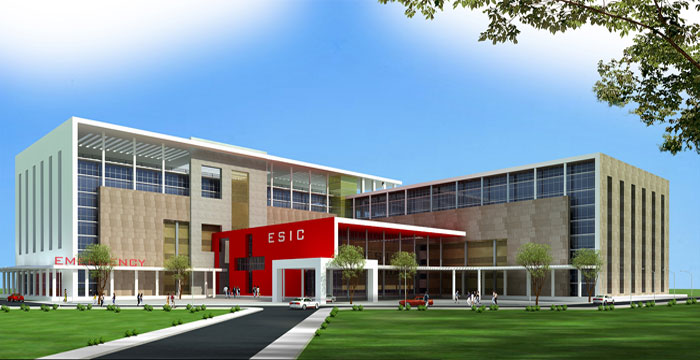
A ward with nurse station
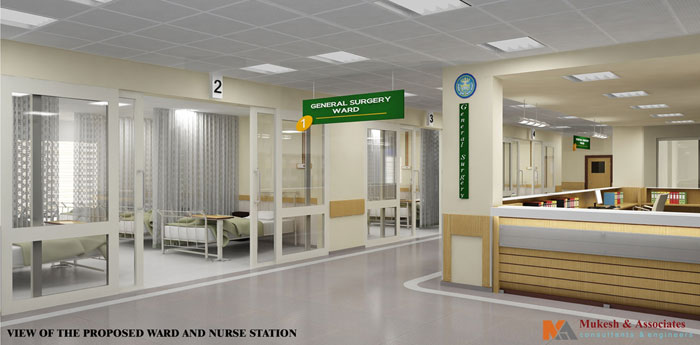
Administration Block
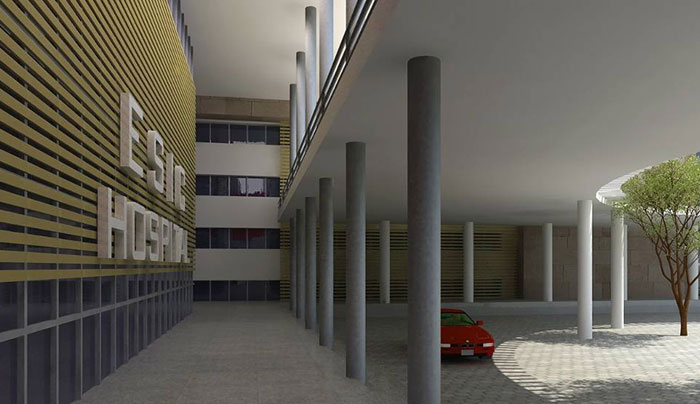
View from portico

January 5th, 2012 Author : Chitta Baral
Following is from a report in Times of India.
The report of the steering committee on health for the 12th five year plan (incorporating reports of all working groups and deliberations in Committee meetings) has suggested opening of four new prototypes of premiere All India Institute of Medical Sciences ( AIIMS) in addition to the eight already approved.
… Union health ministry is in the process of constructing six AIIMS-like institutes in Patna, Raipur, Bhopal, Bhubaneswar, Jodhpur and Rishikesh at a cost of Rs 847 crore each, up from Rs 332 crore that was originally estimated. There are expected to be ready by July, 2012.
The Planning Commission has given approval to two more AIIMS-like institutes in Uttar Pradesh and West Bengal. …
With 26 medical institutions have been approved for upgrade, the panel has said an additional 30 medical colleges established at least 20 years ago be identified for support through Pradhan Mantri Swasthya Suraksha Yojna.
“Other medical colleges, in private or voluntary sector may also be considered for upgrade and strengthening for starting new postgraduate disciplines and increasing post-graduate seats,” the report says.
In Odisha, as per the timeline, SCB medical college in Cuttack was established in 1944, VSS in Burla was established in 1959 and MKCG in Berhampur was established in 1962. All three of them satisfy the above mentioned criteria of being established 20 years ago. Considering that none of the 26 approved upgrades are from Odisha, and 4 states currently are approved for both new AIIMS-like institutes as well as upgrades (WB,Bihar, MP, UP) the Odisha government should push for all three of its existing government medical colleges to be upgraded during the 12th plan.
1 comment December 31st, 2011 Author : Chitta Baral
Following are excerpts from a report in Times of India.
Union health minister Ghulam Nabi Azad on Friday asked the Medical Council of India (MCI) to prepare a series of medical reforms within a month. One of the crucial reforms is regarding land required to start medical colleges.
Now, the ministry allows a medical college to start on a 10-acre plot in nine cities – Mumbai, Chennai, Kolkata, Delhi, Bangalore, Hyderabad, Ahmedabad, Kanpur and Pune. It is planning to expand this list and include state capitals of Orissa, Uttar Pradesh, Bihar, Jharkhand, Chhattisgarh and Rajasthan, which are not only facing acute shortage of human resources, but also have poor health indicators.
The ministry will allow these states to have split campuses – hospital and medical college within 10km of each other. This facility is available only in north-eastern and hill states, which require 20 acres of plot to start a medical college.
… The high-power expert group (HLEG) of the Planning Commission working on universal health coverage has proposed a phased addition of 187 colleges. The HLEG said by 2015 under phase A, 59 new medical colleges will admit students in the 15 states of Assam, Bihar, Chhattisgarh, Gujarat, Haryana, Jammu and Kashmir, Jharkhand, Madhya Pradesh, Maharashtra, Meghalaya, Orissa, Punjab, Rajasthan, UP and West Bengal.
By 2017, 13 of these states will have an additional 70 medical colleges, and by 2022, 58 additional colleges will be built in two additional phases (2017-20 and 2020-22). By 2022, India will have one medical college per 25 lakhs in all states except Bihar, Uttar Pradesh and West Bengal.
"The implementation of HLEG’s recommendations will enable the additional availability of 1.2 lakh doctors by 2017 and another 1.9 lakh doctors between 2017 and 2022. With this rate of growth, it is expected that the HLEG target of one doctor per 1,000 will be achieved by 2028," the report said.
These easing of norms would indeed help. In particular, the plan to expand Capital Hospital in Bhubaneswar to a medical college is stuck because of the land requirements. With the ease of the norms many large hospitals, which already have or are close to having the required number of beds, can have an associated medical college.
The ease of the norms should be such that many district hospitals can also have medical colleges. That will spread the medical colleges to other districts.
2 comments December 24th, 2011 Author : Chitta Baral
| Name of the University | Official status on 8/20/2011 (my comments) |
|
| 1 | Centurion University of Technology and Management | Established on 12/23/2010 |
| 2 | Sri Sri University | Act passed by GOO on 12/26/09. No request has been received for visit of H.P.C (My comments: Expected to commence in Fall 2012) |
| 3 | ICFAI University | Act passed by GOO on 3/9/10. No request has been received for visit of H.P.C. |
| 4 | Vedanta University | Bill passed by OLA in December 2009, awaiting Governor’s assent. |
| 5 | Jagadguru Kripalu University | Draft Bill, land, project report etc. are being examined as per the guidelines. |
| 6 | Xavier University | Steps are being taken for finalization of the Draft bill/cabinet memorandum |
| 7 | Techno Global University | Land, project report etc. are being examined as per guidelines. |
| 8 | Amrita Viswa Vidyapeetham University | Draft bill from the proposed university has not yet been received. Collector, Khurda/Cuttack has been requested for identification of 150 acres of land for establishment of the university. |
| 9 | Synergy University | Land, project report etc. are being examined as per the guidelines. |
| 10 | Women’s university of Technology | Land, project report etc. are being examined as per the guidelines. |
| 11 | Private University by Rai foundation | Land, project report etc. are being examined as per the guidelines. |
| 12 | Amity University | Land, project report etc. are being examined as per the guidelines. |
| 13 | University of Corporate Excellence | Land, project report etc. are being examined as per the guidelines. |
| 14 | Silicon University | Land, project report etc. are being examined as per the guidelines. |
| 15 | ASBM University | Land, project report etc. are being examined as per the guidelines. |
| 16 | Divine Global University by Divine Education Trust, Delhi | Draft bill, land, project report etc. are being examined as per the guidelines. |
| 17 | GIET University, Gunupur | Land, project report etc. are being examined as per the guidelines. |
| 18 | C. V. Raman International University Bhubaneswar | Land, project report etc. are being examined as per the guidelines. |
| 19 | JPM University by Shree Chandulal Minda Memorial Trust | Land, project report etc. are being examined as per the guidelines. |
| 20 | Krupajal National University | Land, project report etc. are being examined as per the guidelines. |
| 21 | Manipal Education and Medical Group (to set up a world class university at Bhubaneswar) | DPR has not been received. |
| 22 | Oriya University | DPR has not been received. |
| 23 | Edu City in Rourkela by Knowledge Foundation, Jail Road, Jharpada, Bhubaneswar | The foundation has been requested to furnish audited profit and loss account, balance sheet of the preceding 5 years as filed before the income tax authorities and the copy of the trust deed. |
| * | BIMTECH | Expressed interest to be a university after the above were listed. (Note: This is an update.) |
December 23rd, 2011 Author : Chitta Baral
Following is an excerpt from an Indian Express report in ibnlive.com.
The 10 proposed agro-polytechnics by the Odisha University of Agriculture & Technology (OUAT) in the agro-climatic zones of the State would come up by the next academic session beginning July-August. These polytechnics would offer two-year diploma course for Plus-II pass-outs in the disciplines of agriculture, fisheries, animal science and horticulture. While one each polytechnic will be dedicated for horticulture, fisheries, animal science, the remaining seven will impart training on agriculture.
The polytechnics will also provide certificate courses for school dropouts in various disciplines.
… The OUAT had last year proposed to set up the polytechnics aiming to help the grassroots-level people in the field of technology transfer and guiding farmers in improving their economy.
These polytechnics would churn out agro-technicians, who can earn a living by doing agricultural jobs for the farmers on payment basis or just establishing their own ventures such as seed production, nursery management, food processing and preservation and bio-fertiliser production.
There is a great need for such intermediate-level technicians who can convince the local farmers about low-risk technologies and their applications for better yield.
V-C Ray said the agro-polytechnics would function close to agriculture research stations and Krishi Vigyan Kendras as there will be optimum utilisation of teachers, support staff, equipment and appliances and other existing facilities. “If required, additional infrastructure would be set up for the purpose,” Ray said.
December 20th, 2011 Author : Chitta Baral
An article in Telegraph mentions that Sainik School Bhubaneswar occupies an area of 220 acres. It is located next to Utkal University in a prime location. At present the Bhubaneswar Sainik School has a capacity of 525 students. Its current faculty strength is 28 and it has an adminsitrative staff of 14. It probably has some more maintenance staff.
While the achievement of Sainik School Bhubaneswar has been very good (see excerpt below)
Achievements: So far approximately 600 cadets have become officers in the defence forces through NDA alone. In addition many cadets have got commission through other entries. This school also has been honoured by the achievements of its cadets through various civil services like IAS-14, IPS-07 and allied services – 09. Several have become ministers in the State of Orissa and Nagaland. The cadets making foray in the fields of medical, engineering, merchant navy are plenty and doing the school proud. The highest ranking officers are two major generals and one Air Vice Marshal.
I think the 220 acres in a prime location in a capital city is a gross under utilization of the land for a residential school of 525 students, 28 teachers and 14 academic staffs, unless one explains it away as a green cover.
Following excerpts tell the story of how the Sainik Schools were set up.
Salient Features of Sainik Schools
(a) The entire capital expenditure on land and buildings is met by the respective State Govts who are also required to provide funds for maintenance of infrastructure and for new infrastructural projects. The State Govts also award scholarships on merit cum means basis.
…
Role of Ministry of Defence in Sainik Schools
(a) Ministry of Defence provides scholarships to wards of defence personnel including ex-servicemen. In addition Ministry of Defence provides central assistance to those students who are awarded state scholarships. The sharing of expenditure on fees/scholarships among Central Govt, State Govt and parents is decided by the BOG from time to time.
(b) With effect from financial year 2003-04, the Ministry of Defence has implemented a scheme under which burden of fee and dietary charges are being shared between the Ministry of Defence and the parents in the ratio 3 : 1. Under this scheme all boys studying in Sainik Schools get financial assistance of about Rs.9,000 – 10,000 every year. The scheme also provides incentive to boys who join the NDA by refunding.
Achievements of Sainik Schools a) Aims – So far these schools have contributed about 7,000 officers to the three services. Its students today occupy important positions in all spheres of national activities. Since the schools were founded in early 60s, its cadets have now reached the level of Generals in the Army and equivalent Ranks in the Navy and Air Force.
b) Results – These schools send about 130-160 cadets to the NDA every year. As far as CBSE results are concerned the schools are performing creditably. All efforts are on to improve the results qualitatively.
c) Quality Education – In most of the States Sainik Schools are the only residential institutions and that too located in isolated areas. Thus these schools have been able to contribute significantly to development of education in backward areas and also in carrying out backward area educational integration.
Considering that the state government gave the land and buildings to the school and in most states these schools are in isolated areas, I think it may be worth pondering if the:
(a) Sainik School Bhubaneswar should be relocated to a backward area where it can contribute positively to the area and the existing 220 acres be used more productively; perhaps by turning it to a small Knowledge City, say similar to the 381 acres Knowledeg City in Mohali.
OR
(b) augment the current use by using part of the 220 acres of Sainik School Bhubaneswar to establish a military academy or an armed forces medical school or a DRDO lab, etc. to have better land utilization.
There are many examples similar to (b). For example, IISER Pune is established on NCL (National Chemical Laboratory) land.
This may be a good time to ponder about options (a) and (b) as it is reported that:
The 220-acres of land given by the government for the existing Sainik School in Bhubaneswar established in 1962 continues to be under the general administration department of the government.
9 comments December 16th, 2011 Author : Chitta Baral
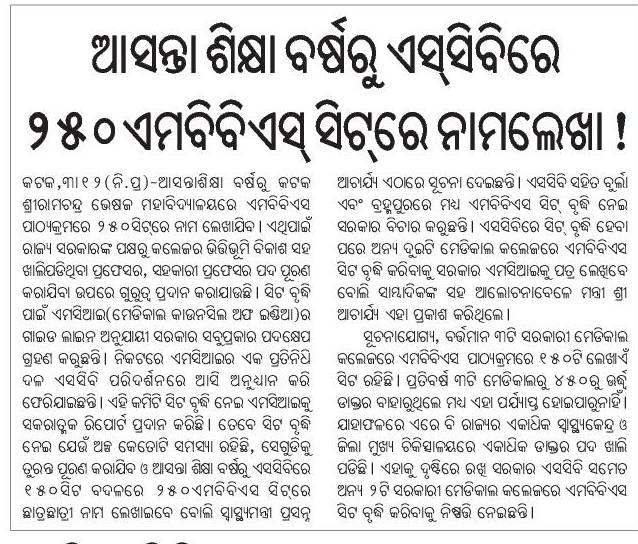
December 13th, 2011 Author : Chitta Baral
Following is from Priya Abraham’s report in Telegraph.
Private institutes in the state have started approaching the Odisha University Agriculture of Technology (OUAT) for affiliation, following passing of the OUAT bill.
The bill was passed on August 23 amending the Orissa University of Agriculture and Technology Act, 1965, to enable the university to accord affiliation to institutions in the private sector for imparting education in agriculture, veterinary, fisheries, forestry and allied sciences.
While two private colleges in the capital have approached the authorities, a former professor of the varsity is said to be considering the idea of setting up an agricultural college, sources said.
… While students are keen to take admission in the constituent colleges of the OUAT, the existing intake capacity of the varsity is limited.
This year, the university had received about 12,000 applications for admission in 608 seats in various courses in the colleges of agriculture, agricultural engineering, fisheries, veterinary science and home science.
The university is also working towards the establishment of two constituent colleges. There will be a college of veterinary science in Sambalpur and a college in dairy technology in Baripada.
December 5th, 2011 Author : Chitta Baral
4 comments December 2nd, 2011 Author : Chitta Baral